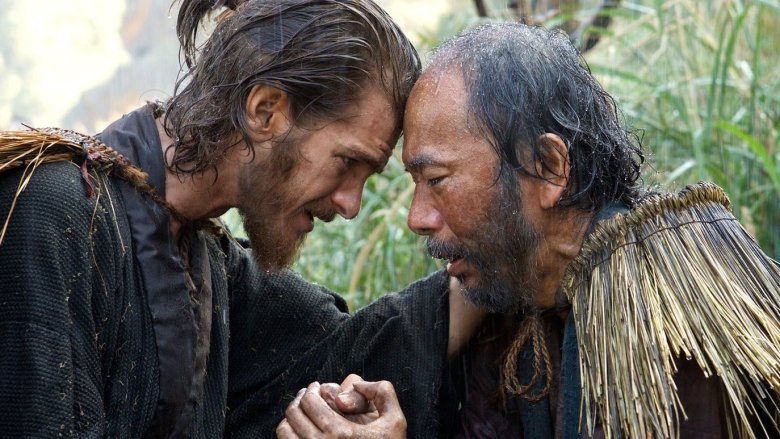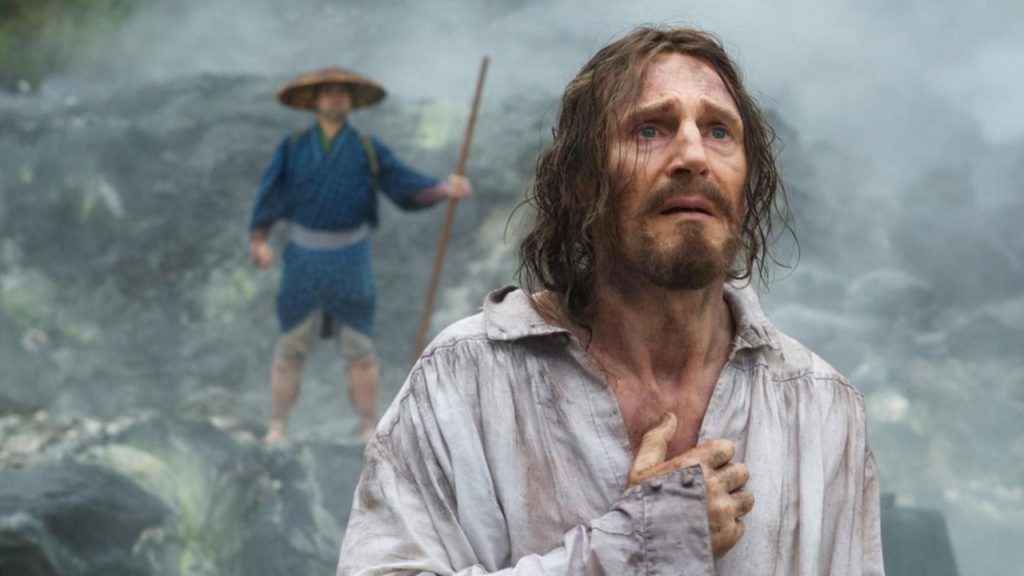There’s a fridge magnet at our place — currently holding up soon-to-be-discarded pages of end-of-year school events — boldly displaying the iconic stylised image of Barack Obama, shaded in red, white and blue, with the word “Hope” printed beneath him.
It’s eight years old. It looks a bit faded. A bit naïve. It represents a time of great optimism. How things have changed.
A meme currently going around on Twitter describes this year as the worst ever:

It’s kind of a joke, but even a cursory glance back at 2016 will tell you why not everyone’s laughing.
Terrorist acts too many and too dreadful to name, the shock of Brexit, the bewildering election of Donald Trump, the horror of Aleppo. It’s hard to be confident next year will be any better.
So it seems in some ways fitting that Hollywood’s latest “big idea” movie, to be released in the US just prior to Christmas, is to be Martin Scorsese’s dark and provocative Silence. This is not the usual saccharine Yuletide fare.
Set in 17th-century Japan, Silence portrays a Portuguese Jesuit Priest ministering in secret to a hounded and persecuted minority Christian population in villages around Nagasaki.
Father Sebastião Rodrigues is forced to watch helplessly as various members of his flock in the hand of the Japanese “Inquisition” are set on fire, slowly tortured with boiling water, drowned, hanged or beheaded in front of him. Rodrigues screams out to his God for mercy, intervention or even just a word. In return he hears nothing.
Silence.
It is the weight of that silence that Scorsese explores in his adaptation of the novel by Shusaku Endo. He took almost three decades to make the film after first reading the novel in 1989 and it is clearly a profoundly personal exploration of a pressing dilemma for someone of Scorsese’s faith: Where is God in the darkness?
 “Silence is a hard film to recommend,” but “demands to be seen”, writes Newsweek critic Tom Shone.
“Silence is a hard film to recommend,” but “demands to be seen”, writes Newsweek critic Tom Shone.
“How does a 2-hour, 41-minute movie about the crisis of Christian evangelism in 17th century Japan fit into your Christmas shopping schedule?”
But it does fit. Because the Christmas story itself — the idea of incarnation — is not just a neat or cosy tale of triumph or even sentimental bedtime story of babies and farm animals.
Instead, like Silence, the nativity is an account of deep longing, rent with pain, mystery and discomfort. It involves shame, alienation, violence and the portent of future darkness. It is rich with hope, but hope inextricably tied to the realities of the human experience in all its beautiful and tragic wonder.
The poet T. S. Eliot understood that dynamic. His Journey of the Magi, written as part of a series of advent poems, delivers an unconventional retelling of the Christmas story from the perspective of the three “wise men”, who in Eliot’s rendering at least, are somewhat reluctant converts.
“Just the worst time of year for … such a long journey”, he writes.
That journey involves the scorn of onlookers, recalcitrant camels, and hostile towns and cities. These great men from the east find themselves missing “summer palaces” and “silken girls bringing sherbet” in order to witness a birth that also feels like a death.
It is “hard and bitter agony” for these wise men, because after seeing the child, they are never the same again, “no longer at ease here, in the old dispensation”. Not your traditional Christmas card sentiment.
In another advent poem, Eliot gives us Simeon, an aged man of faith from Luke’s Gospel who had faced the silence of God his whole life. Simeon, waiting, yearning, is presented with the child Jesus at the Temple in Jerusalem, “the still unspeaking and unspoken word”.
Close to death as Simeon is, and even as he can foresee the calamity of the Roman destruction of Jerusalem — “foreign faces and foreign swords” — in holding the Christ child he senses consolation, even salvation itself.
By the end of Silence, Scorsese’s priest Rodrigues looks in more than one sense utterly defeated. His dreams are in tatters. Death is all around him. His whole identity has been wrenched from his grasp and his formidable resolve cruelly beaten out of him.

And yet, the silence of God does not mean the absence of God. It is in the silence that Rodrigues senses the presence of God suffering beside him. This is the God he believes feels deeply the injustices large and small that humans inflict on one another; who enters the human drama as a child and fully engages with the human experience.
The Christmas story claims to be, out of the void, a moment of profound communication — a break in the silence between a creator and his creatures — God drawing near to us. Our literature and art has for centuries reflected the mysterious wonder of the incarnation and the sense that it represents the best hope that, despite appearances to the contrary, we are not alone in the universe.
The acclaimed Japanese artist Makoto Fujimura, who has written and painted in response to Endo’s work, says:
“[Endo] is the one who dared to walk right into the heart of that darkness. What Endo does is he creates a way for ordinary, weak, broken human beings to know that there is grace at the base of the universe operating to catch us as we struggle.”
Scorsese seems to sense something of that grace. He is resolute in refusing any comfortable resolution to our deepest questions. He has experienced too much of real life to allow that.
But equally he won’t brook complete despair either. He has too much faith for that.
It’s that kind of faith — brutally honest but unyielding — that might be what’s most needed as we draw the curtain on a most difficult year.
Simon Smart is director of the Centre for Public Christianity. He is the co-author with Jane Caro, Antony Loewenstein, and Rachel Woodlock of For God’s Sake: An Atheist, a Jew, a Christian and a Muslim Debate Religion.
This article first appeared at ABC News.


